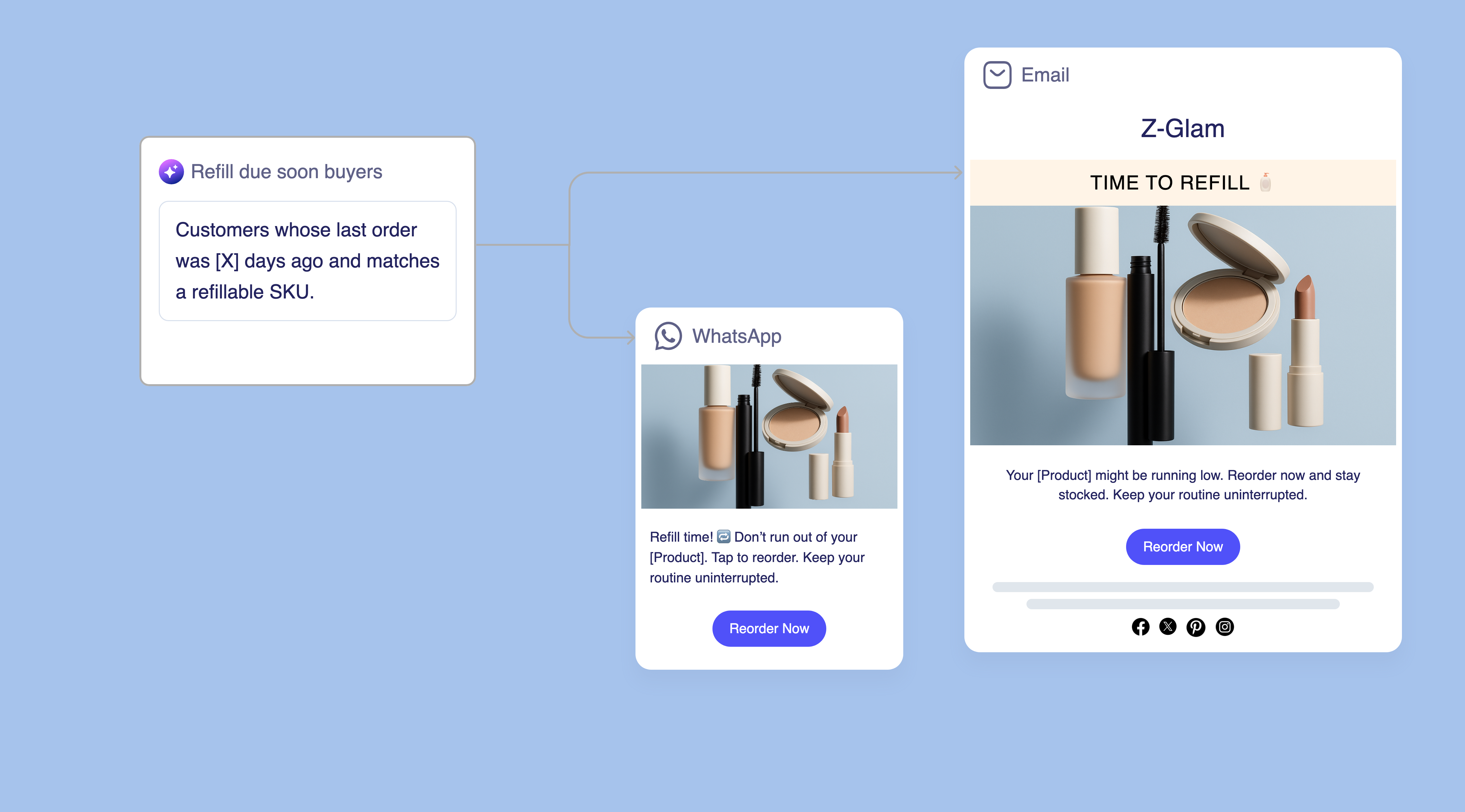
Replenishment Reminders
Increase repeat purchase rates by reminding users to restock consumable products based on average usage timelines.

What are Replenishment Reminders?
Replenishment Reminders target users who bought consumables based on product lifecycle by triggering messages reminding users to restock their product based on average usage timeline. This repeat purchase strategy leverages predictable consumption patterns to prompt timely reorders, ensuring continuous product usage and building consistent purchasing habits for consumable items.
Why Replenishment Reminders Matter

Challenges

Opportunities
Outcomes
Higher Customer Retention Rates
Increased Repeat Purchase Frequency
Better Revenue Predictability
Who is it for?
Audience
Exclusions
How it Plays Out
A sample sequence for this use case.
Time to refill? Your [Product] might be running low. Reorder now and stay stocked → [CTA]
Refill time! Don't run out of your [Product]. Tap to reorder → [Link]
Running low reminder: Keep your routine uninterrupted → [Restock Now]
Final refill reminder: Don't let your supply run out → [Order Again]
Best Practices
- Base reminder timing on actual average usage patterns rather than arbitrary schedules to ensure relevance and accuracy.
- Send reminders slightly before estimated depletion to prevent complete stockouts that might lead to brand switching.
- Focus on continuity messaging rather than promotional language to maintain the service-oriented customer relationship.
Replenishment Reminders Examples & Prompts
Channel Examples
Automate with Zenie Prompts
Managing replenishment cycles for different consumable products requires precise usage timeline tracking and customer behavior analysis. With Zenie, you can automatically monitor consumption patterns and trigger reminders at optimal intervals.

Trigger a message reminding users to restock their product based on average usage timeline.
Explore Similar eCommerce Marketing Strategies
FAQs
Why are replenishment reminders crucial for consumable product businesses?
Replenishment reminders work because they solve a genuine customer problem running out of essential consumable products. D2C marketers see higher retention rates because automated reminders prevent usage gaps that lead to competitor trials and brand switching.
How should eCommerce brands calculate optimal replenishment reminder timing?
D2C businesses should analyze historical reorder data to determine average consumption cycles for each product category. Base timing on actual customer usage patterns rather than manufacturer estimates for more accurate replenishment scheduling.
What types of consumable products work best for replenishment reminders?
Skincare products, supplements, pet food, coffee, cleaning supplies, and personal care items with predictable consumption patterns work most effectively. D2C brands should focus on products customers use consistently rather than occasional-use consumables.
Should replenishment reminders include subscription options for eCommerce brands?
Yes, D2C businesses should present subscription alternatives as convenient solutions to repeated manual reordering. eCommerce marketers can use replenishment reminders as opportunities to convert customers into predictable recurring revenue streams.
How do eCommerce businesses measure replenishment reminder success?
Track replenishment conversion rates, customer retention improvements, average time between reorders, and subscription conversion rates. Monitor whether customers who receive timely reminders maintain consistent usage versus those who experience supply gaps.

